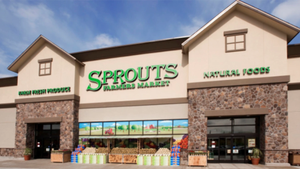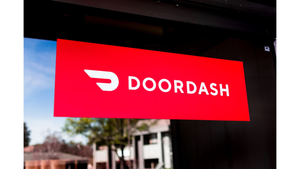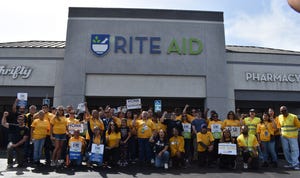The female perspective
January 1, 2018
As women shop other channels for their feminine hygiene needs, grocers look to non-traditional products and private label offerings to help capture market share. By Craig Levitt There is really no way around it. At one time or another about half the population will use feminine hygiene products. Logic would suggest that grocery retailers would be among those that most benefit from these sales. However industry observers say that even though women visit supermarkets three times more than other channels—particularly drug and mass—grocery retailers seem to be lagging a bit behind. “The grocery channel’s limited selection and lack of new products in feminine hygiene is training women to look to their drugstore or mass merchant for their feminine hygiene needs,” says Kristin Stewart, director of marketing, consumer products for Cedar Rapids, Iowa-based Lil’ Drug Store Products, Inc. Observers say the feminine hygiene category has experienced healthy growth over the past year. Much of that growth is being fueled by women’s desire for more natural products, products that better help women take control of their feminine health issues and enhanced private label offering. According to the Chicago-based SymphonyIRI Group, for the 52-week period ended Feb. 20, total sanitary napkin and tampon sales for food, drug and mass merchant outlets, excluding Walmart, accounted for more than $1.5 billion, up 1.7% from a year ago. Unit sales totaled more than 345 million, an increase of almost 1.5%. Retailers should also be keeping a close eye on private label products, observers note. During the same time frame, private label sales of sanitary napkin and panty liners outpaced category sales 2.1% versus 1.7%. In the last 12 weeks ended Feb. 20, the gap is even bigger—2.5% versus 0.4%—and among vaginal treatment products private label is the top selling brand. “Within the past year the leading retailers have really been treating their brand as a national brand,” says Sebastien Bourassa, vice president sales and marketing for Drummondville, Quebec, Canada-based Fempro I. “We believe this is the right strategy and we offer and recommend special packs to help drive out-of-section display. This has proven to be a winning strategy as all of our [retailers] have outpaced their respective channel performance.” Observer further suggest that instead of focusing on, and offering so many SKUs of traditional items, such as douches, washes, powders and sprays, supermarkets may want to look toward some of the newer items that other channels stock. “Women are looking for products that solve their feminine issues. Many of the older products and subcategories have been experiencing declines year after year, while newer, problem-solving products have been growth catalysts,” says Stewart. Stewart says Lil’ Drug Store has been concentrating on providing solution-oriented products such as RepHresh Gel, which allows women to maintain a healthy feminine pH; RepHresh Pro-B, which balances yeast and bacteria and its latest addition, RepHresh Brilliant tampons, which helps reduce the natural pH increase that occurs during a woman’s period. Natural alternatives Greeley, Colo.-based Natracare’s product line includes maternity pads, nursing pads and incontinence products in addition to maxi pads, tampons and liners—and they are all-natural and organic. Observers say more and more women are looking for these environmentally friendly hygiene products. In fact, according to consumer research done by the Chicago-based research company Mintel, a majority of consumers are willing to pay a premium for a green product. While natural and organic feminine hygiene products remain a niche category, Sue Hewson, owner of Natracare, says retailers ought to pay closer attention to this trend, or otherwise risk losing a valuable customer. “Retailers really need to do a lot of work with natural feminine hygiene products,” says Hewson. “They need to be brave and be willing to break up their conventional product assortment in favor of natural products because more and more consumers are demanding these types of items. The benefit for the retailer will be repeat sales from satisfied consumers.” Hewson adds that there is a need for retailers to educate consumers on the differences between products. The best ways are through signage and merchandising the natural and organic products in the feminine hygiene aisle instead of keeping them isolated in the organics section. Also, she says retailers need to commit to the segment. “In the end, a retailer who does take a risk will benefit by increased sales and the opportunity to offer products that are different than the competition,” says Hewson. “Otherwise they risk losing these customers to other retailers and the Internet.”
About the Author
You May Also Like




